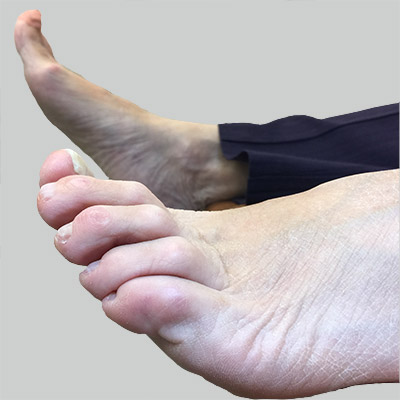How can we help you with HAMMER TOES?
A hammer toe can be best described as an abnormal contraction or “buckling” of a toe. This occurs due to a partial or complete dislocation of one of the joints that form the toe. As the toe continues to be deformed, it will press up against the shoe and may cause corns. If the deformity occurs in the lesser toes and in the joint nearest the foot, it is called a hammer toe.

What causes it?
Hammer Toe can occur when a person does not wear appropriate shoes, for example if the shoes are too tight at the front or are pointed that can cause the joints to be pushed inward which over long periods of time can cause these joints to become dislocated. Flat feet or High arched feet can also result in buckling toes which is a major cause of hammer toe. As such, genetics plays a major role in the occurrence of hammer toe, if you are genetically predisposed to having high arches or flat feet the chances of hammer toe occurring is higher than in the general population.
What will happen if I leave it untreated?
If left untreated the toe muscles will eventually be unable to straighten.
Patients often develop corns and calluses on the tips of the toes or on the top of the middle joint of the toe. Pain can also develop in the other toes and the feet as a whole. This can make it difficult to find comfortable footwear.
What can help?
- If your hammer toe has been caused by footwear, making changes to your choice of shoe can help in the first instance.
- A shoe with a deep toe box would be recommended. Shoes that have high heels or narrow toe boxes would not be recommended due to the pressure that they place on the toes.
- Exercises may be prescribed to stretch and strengthen the toes.
What are the treatment options?
- If a toe is still flexible, a doctor or podiatrist may recommend that the patient change to roomier and more comfortable footwear and that they wear orthotics. These Orthotics are placed within the shoe so that it can help to reposition the toe and relieve any pressure or pain.
- Surgery may be considered if conservative treatment options have failed to reduce the pain and discomfort for the patient.

